According to recent research, an estimated three million U.S. adults and 16 million individuals worldwide suffer from opioid use disorder. The crisis has been escalating for years, fueled by a variety of factors.
While traditional, in-person treatment continues to be a primary means of support and recovery, technology has widened the scope of options. Today, patients can communicate with their treatment specialists online, right from the comfort of their own homes. These specialists can even place prescriptions for the patients, which are delivered right to their doorsteps.
This opioid addiction treatment is called telemedicine, and it’s changing the healthcare sphere. Today, we’re diving into how it works and the benefits it can offer.
What Is Telemedicine?
Before we dive into all of the telehealth benefits that current and prospective patients need to know, let’s take a step back. What is telemedicine?
Put simply, this is a service that allows patients to connect with their healthcare provider without the need to go in for an in-person visit. These visits are primarily held online, via your preferred computer, smartphone, or tablet.
Some of the services that patients can perform through telehealth or telemedicine include:
- Speaking to their healthcare provider live via video chat or the telephone
- Sending and receiving messages from their provider via secure messaging
- Allowing their healthcare provider to monitor them remotely and check in on them at home
- Requesting and receiving prescriptions designed to support their treatment
Telemedicine and Opioid Addiction Treatment
Telemedicine can be used in a variety of different healthcare applications. One of those is opioid addiction treatment. Let’s take a look at a few of the reasons why this approach is often successful.
Encourages Accountability
Attending in-person therapy visits can be challenging, especially for someone in the throes of addiction. With the exception of inpatient programs, many drug treatment programs require patients to coordinate transportation to and from their designated recovery center.
For one, this can lead to scheduling conflicts. When the process isn’t easy or accessible, it also makes it more likely for patients to relapse or avoid taking their medications. Accountability hinges on close communication, and if office visits aren’t always possible, that degree of oversight can lag.
One of the greatest benefits of telemedicine is that it meets the patient exactly where they are. As long as they have an internet connection and a device, they can communicate with their provider, provide regular updates, and stay on their medication regimen.
This was made especially evident during the recent COVID-19 pandemic when businesses around the world closed their brick-and-mortar doors. This included treatment recovery centers.
With their daily routine altered, patients dependent on those visits struggled. Yet, telehealth provided an alternate route forward.
One study by the National Institutes of Health (NIH) found that people with opioid use disorder who received telemedicine services during the pandemic were more likely to stay on their medications. They were also less likely to overdose.
Provides Immediate Support
Timely responses are key for patients struggling with opioid use disorders. As they begin to withdraw from the substance, they can experience a range of painful symptoms, including:
- Nausea
- Diarrhea
- Sweating
- Anxiety
- Insomnia
If those symptoms become debilitating, it’s necessary for the patient to seek medical attention. Yet, this isn’t always possible for those who rely on in-person providers. Many centers keep designated office times, and it can be difficult to connect to after-hours support teams.
Conversely, most telemedicine teams are available on an extended basis. Patients can connect with them instantly to receive medical support and advice. Withdrawal symptoms often drive individuals back to using their illicit substances, so quick treatment and response are key.
Interface With Additional Providers
At online Medication Assisted Treatment (MAT) centers like Recovery Delivered, providers can help patients create and stick to customized treatment and recovery plans. However, there may come a time when a higher level of care is required.
For instance, if any of the above withdrawal symptoms turn severe, the patient might need immediate help. If they reach out to one of our providers, we can quickly connect them to medical detox and inpatient recovery centers right in their home state. We’ve already vetted and spoken with all of the centers we team with, so they can rest assured they’re receiving high-quality care.
Once the patient receives the help they need, they can return to our program and access our providers for their ongoing care.
Saves Time
Any time you can complete a service online rather than go into an office, you’re saving time. This applies to online classes, online shopping, and yes — online addiction recovery treatment.
From group meetings and intensive outpatient programs (IOPs) to addiction counseling sessions, traditional treatment options can be time-restrictive. When sessions aren’t convenient and practical for patients, they may have a difficult time committing to them on a long-term basis.
Programs like Recovery Delivered eliminate many of these constraints. Patients don’t have to spend time driving or riding to their sessions. They don’t have to wait in line at the pharmacy for the prescriptions they need.
Rather, our skilled specialists will be there every step of the way, helping them through treatment and prescribing appropriate medications that come right to them.
Continued Support
The ability to connect quickly also makes it easier for patients to reach out to their specialists when they need a little extra support. For instance, our At Home Detox program is designed to lessen the effects of opioid withdrawal.
As they go through the program, patients will meet with their Delivered doctor on a daily basis. They can also receive chat-based therapy by downloading our treatment app! This way, they’re never too far away from the professional encouragement and support they need.
Discover How Telemedicine Works for Opioid Addiction Treatment
Technology is changing how we live our lives. This is true for everyone, though it’s especially promising for those struggling with opioid use disorders.
Thanks to digital connectivity, patients can now connect with qualified Suboxone physicians online and specialists with the click of a button or the swipe of a screen. This approach to opioid addiction treatment improves accountability, removes common constraints, and makes the detox and recovery process easier to navigate.
Are you ready to seek this type of treatment for yourself or someone you love? If so, let’s get started.


